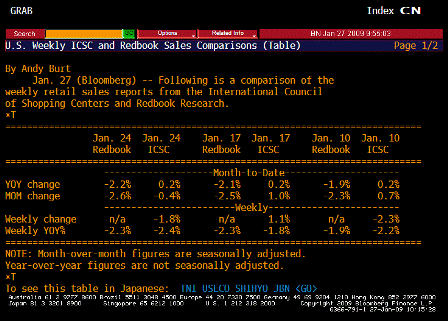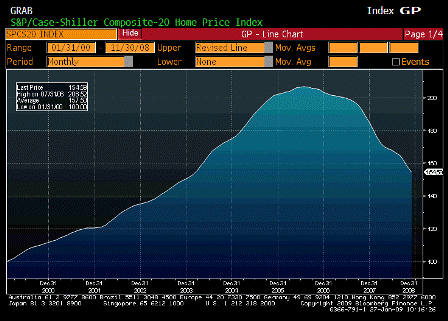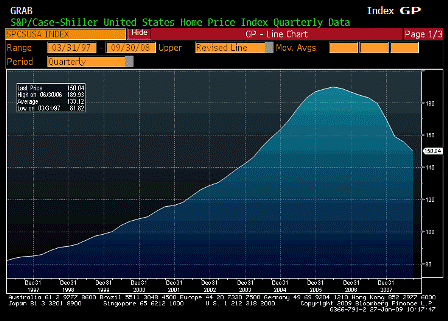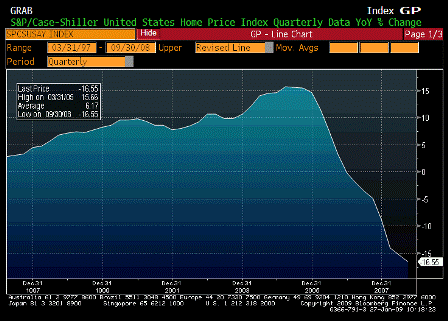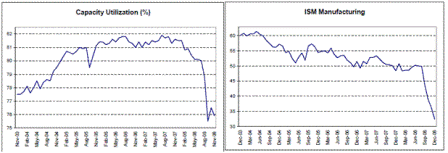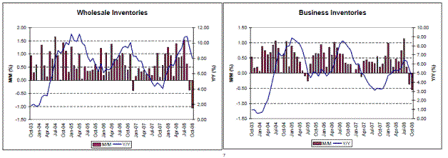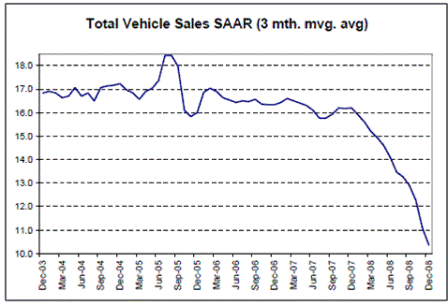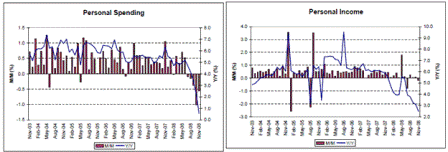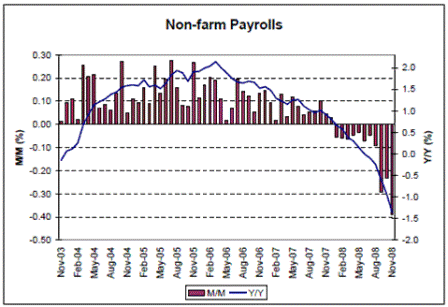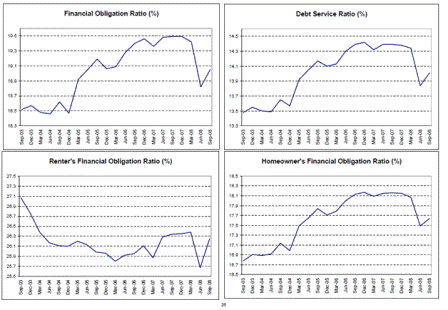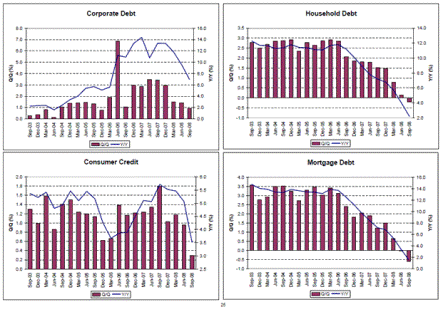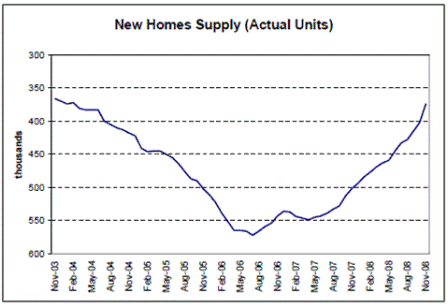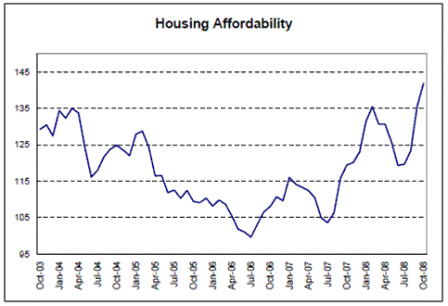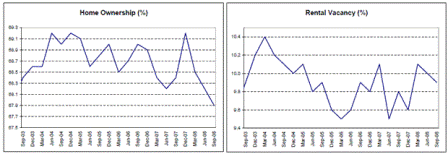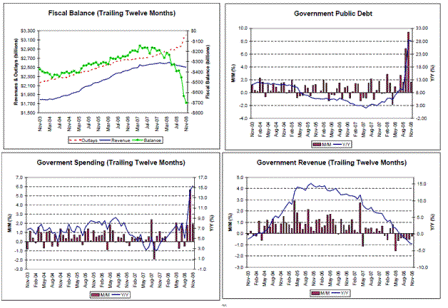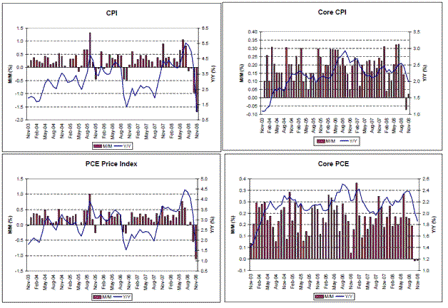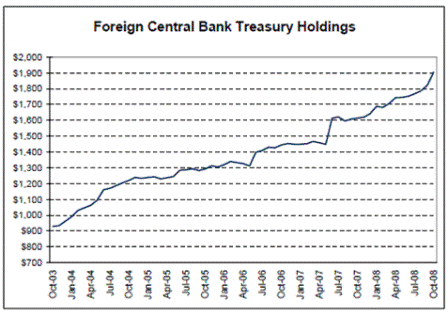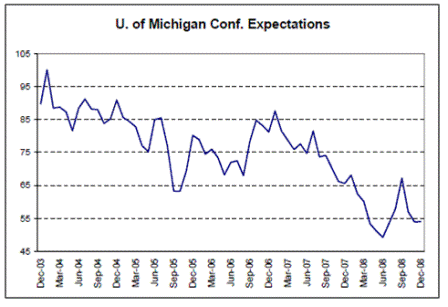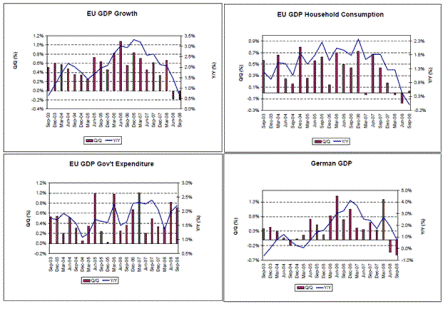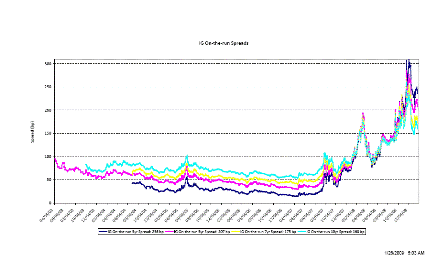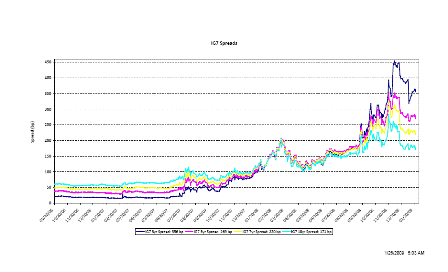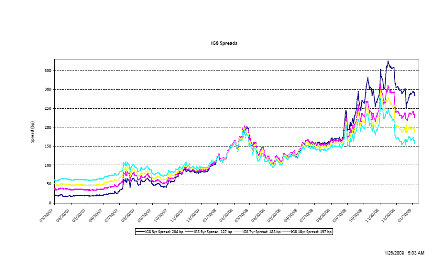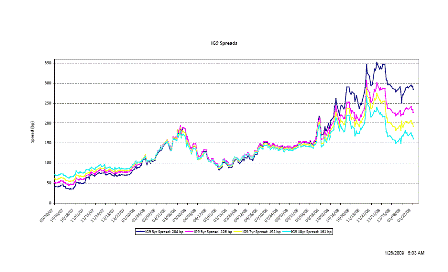[Skip to the end]
(email exchange)
>
> On Thu, Jan 22, 2009 at 5:46 PM, Michael wrote:
>
> Bullet points from the GS report, what do you think of their assessment?
>
Pretty good up to a point.
Agree the deficit probably should be larger to restore full employment.
It goes bad where highlighted below:
>
> The US economy urgently needs a large dose of fiscal stimulus to counter a sharp
> retrenchment in private-sector spending. Consumers are cutting back in a way not
> seen since World War II, and businesses are following suit. Based on current equity
> prices, current credit spreads, and the trend in home prices, we expect the
> private-sector balance between income and spending to rise from 1% of GDP in
> mid-2008 to about 10% by the end of 2009, an annualized increase of 6% of GDP.
>
> To fill this hole in demand, the federal government should become the spender of
> last resort, as monetary easing cannot do the job alone. We reckon that the
> appropriate level of stimulus is $600 billion (bn) at an annual rate, or 4% of GDP,
>
Could be. Maybe more.
>
> with the remaining 2% filled by a narrowing in the current account deficit.
>
Increased domestic demand and higher crude prices could increase the trade gap, which would be highly beneficial, reduce demand, and therefore allow us to run deficits that much higher.
>
> Moreover, with prospects for cyclical recovery in the private sector looking dim,
> this stimulus should stay in place through 2010 and be withdrawn only gradually
> thereafter. The bill recently introduced in Congress, priced at $825bn over two
> years, is a major step in the right direction but is apt to prove insufficient if our
> estimates are correct. On the five-year view customarily used to score such
> programs, we could justify stimulus totaling $2 trillion.
>
Agreed!
>
> While stimulus will boost the federal deficit, it is important to recognize that the
> deficit will rise sharply even if nothing is done. Our projection of the private-sector
> balance implies a deficit of about $1 trillion in 2009, a figure that looks roughly
> consistent with the Congressional Budget Office (CBO) baselineâ€â€Â$1.2 trillion for
> fiscal 2009â€â€Âwhen adjusted for differences in economic outlook, accounting, and
> timing. Moreover, since the deficit must ultimately be financed either by private
> domestic saving or net foreign inflows, the net budget cost of stimulus can be
> reduced if the package avoids measures that mainly boost saving.
>
There’s nothing ‘wrong’ with measures that increase savings and therefore require higher deficits. He’s afraid of deficits per se.
>
> Likewise, much of the prospective surge in federal debt that terrifies many market
> participants is already baked in the recessionary cake. While stimulus will aggravate
> this increase, the United States starts from a fairly comfortable federal debt ratio
> of just over 40% of GDP at the end of fiscal 2008, lower than the G7 average. And
> those who worry about a lack of demand for all this debt should not overlook US
> households and businesses as potential customers.
>
Lack of demand is never an issue.
>
> After all, it is their efforts to repair balance sheets that has caused the need for
> stimulus; with risk aversion running high, it stands to reason that they will shoot
> a few bucks the government’s way to help it do their spending for them.
>
> However, the long-term budget imbalance remains serious.
>
Not applicable.
>
> Thus, any program must feature measures that not only have quick and powerful
> effects but also expire as soon as the need for stimulus has passed. To balance
> these competing objectives, the package should focus on infrastructure and
> investment but also include carefully targeted tax cuts, enhancements of benefit
> programs, and aid to state and local governments as a bridge to these projects,
> many of which take time to develop.
>
OK.
>
> Assuming that the final package is in the range now under consideration, we
> estimate that the federal deficit will reach $1.425 trillion in FY 2009, or 10% of
> GDP (based on CBO’s accounting for TARP and GSEs). While the scale of the
> package driving this change has risen sharply in recent months, so has the rate
> at which the economy is losing momentum. Accordingly, we have not changed
> our economic outlook, though of course this remains subject to review.
>
[top]




